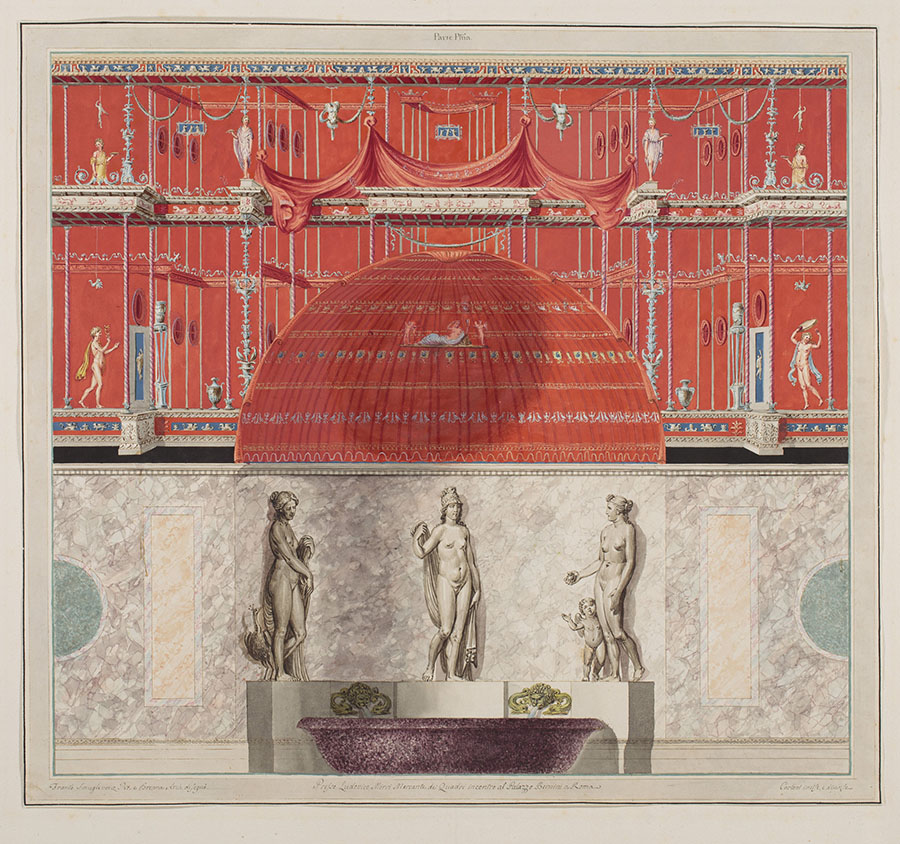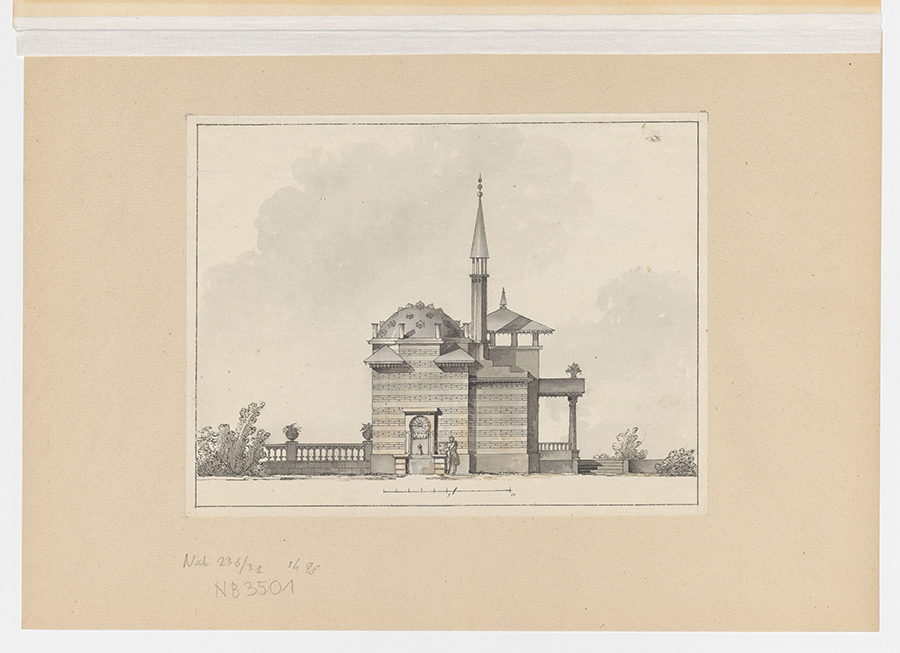Aleksander Musiał
Immersion: Classical Reception and Eastern European Transformations of Hygiene Architecture, c. 1600–1830
My dissertation explores bathing architecture in Eastern Europe from the 17th to the early 19th century and its impact across the continent. During this period, the region witnessed unprecedented developments in hygiene infrastructure, thanks to a network of artists active in the Russian Empire and the Polish-Lithuanian Commonwealth. These include artists working for commonwealth patrons, including Giovanni Battista Gisleni (c. 1600–1672), Tilman van Gameren (1632–1706), Emmanuel Héré de Corny (1705–1763), Simon Gottlieb Zug (1733–1807), and Johann Christian Kammsetzer (1753–1795); such protégés of the Russian imperial court as Charles Louis Clérisseau (1721–1820), Jean-Baptiste Le Prince (1734–1781), Charles Cameron (1743–1812), Mikhail Kozlovsky (1753–1802), Andrei Voronikhin (1759–1814), and Carlo Rossi (1775–1849); and those who worked for both groups: Giacomo Quarenghi (1744–1817), Vincenzo Brenna (1745–1820), Franciszek Smuglewicz (1745–1807), and Jean-François Thomas-de-Thomon (1760–1813). Works by those innovative artists and architects, most often analyzed through monograph studies, are reconsidered through a thematic approach that emphasizes the transnational dimension of their activities and collaborations.

Franciszek Smuglewicz and Vincenzo Brenna (design), and Marco Carloni (print), Room 25 with Judgment of Paris Sculptural Group, hand-colored etching, 53.1 × 58 cm, National Museum in Warsaw, Poland, from Ludovico Mirri, ed., Vestigia delle Terme di Tito e loro interne pitture (Rome, 1776), pl. 7. © National Museum in Warsaw Photo Lab
Eastern European baths, whose forms and functions simultaneously evoked Ottoman and Greco-Roman counterparts, reveal the ideological tensions that surfaced within the societies of the Russian Empire and the Polish-Lithuanian Commonwealth as they negotiated their fluctuating positions between Christian and Muslim cultural circles. More than just a cleansing site, the intimate, immersive space of a bathhouse served as a platform for a socially permissible merging of local and foreign cultural practices, as well as an exploration of the exposed human body. Controversies surrounding this phenomenon among foreign commentators—as articulated in genre scenes, travelogue prints, and scholarly dissertations—constituted a vital point of reference for, and critique of, contemporary debates on human physiology and social improvement. Based on the close study of drawings, structures, and their receptions, my analysis of this little-acknowledged contribution will shed light on the emergence of the modern concept of hygiene and the new bodily models it generated. By bringing together new archival findings regarding innovative designs and structures in the region and recent developments in the history of science, my project revisits the oft-cited Vitruvian bodybuilding metaphor by asking how the changing notions of the former impact the making of the latter, and vice versa.

Giacomo Quarenghi, Turkish Baths Pavilion (side elevation), c. 1800, pen and ink, brush and wash, 23.4 × 30.5 cm, National Museum in Warsaw, Nieborów & Arkadia branch, Poland. © National Museum in Warsaw Photo Lab
During the three years of my fellowship, I spent the first two pursuing fieldwork throughout Eastern and Western Europe, followed by a year of residency in DC. The first year was hosted by the British School at Rome as well as the Visualizing Science in Media Revolutions research group led by Sietske Fransen at the Bibliotheca Hertziana, Max-Planck-Institut für Kunstgeschichte. I spent the second year as a pensionnaire étranger at the École normale supérieure in Paris; visiting scholar at Downing College, University of Cambridge; and doctoral fellow at the Herzog August Bibliothek in Wolfenbüttel. Such an extensive range of institutions, collections, and archives allowed me to pursue the transnational trajectories of early modern artistic training abroad and so initiated international exchanges operating across the continent. During my residency at the Center, I completed my doctoral dissertation manuscript and presented research results at the annual conferences of the College Art Association, Renaissance Society of America, and American Society for 18th-Century Studies. I had the great pleasure of sharing my work with fellows in residence as part of the shoptalk lecture series, in a paper entitled “Excess Underground: Immersive Experience and Climate Control inside Eastern European Bathing Apartments, c. 1760–1780,” as well as delivering a gallery talk organized in collaboration with the National Gallery’s Prints and Drawings department, entitled “Ink Embodiments: Framing Bodily Exposure between Archaeology and Pseudo-Ethnography in European Works on Paper from the Late 18th Century.” The preparation for this tour allowed me to study in detail works by Brenna, Clérisseau, Le Prince, Quarenghi, and Smuglewicz in the museum’s collection. These works greatly enhanced the argument of my dissertation by providing additional precision and drawing attention to the materiality and medium deployed. I hope this contribution will be of use to future scholars of those significant artists who actively set the eastern and western parts of Europe into a lively and innovative dialogue.
Princeton University
Paul Mellon Fellow, 2021–2024
Following his PhD defense, Aleksander Musiał will continue his research as Museum Fellow at the Sir John Soane’s Museum Foundation.
